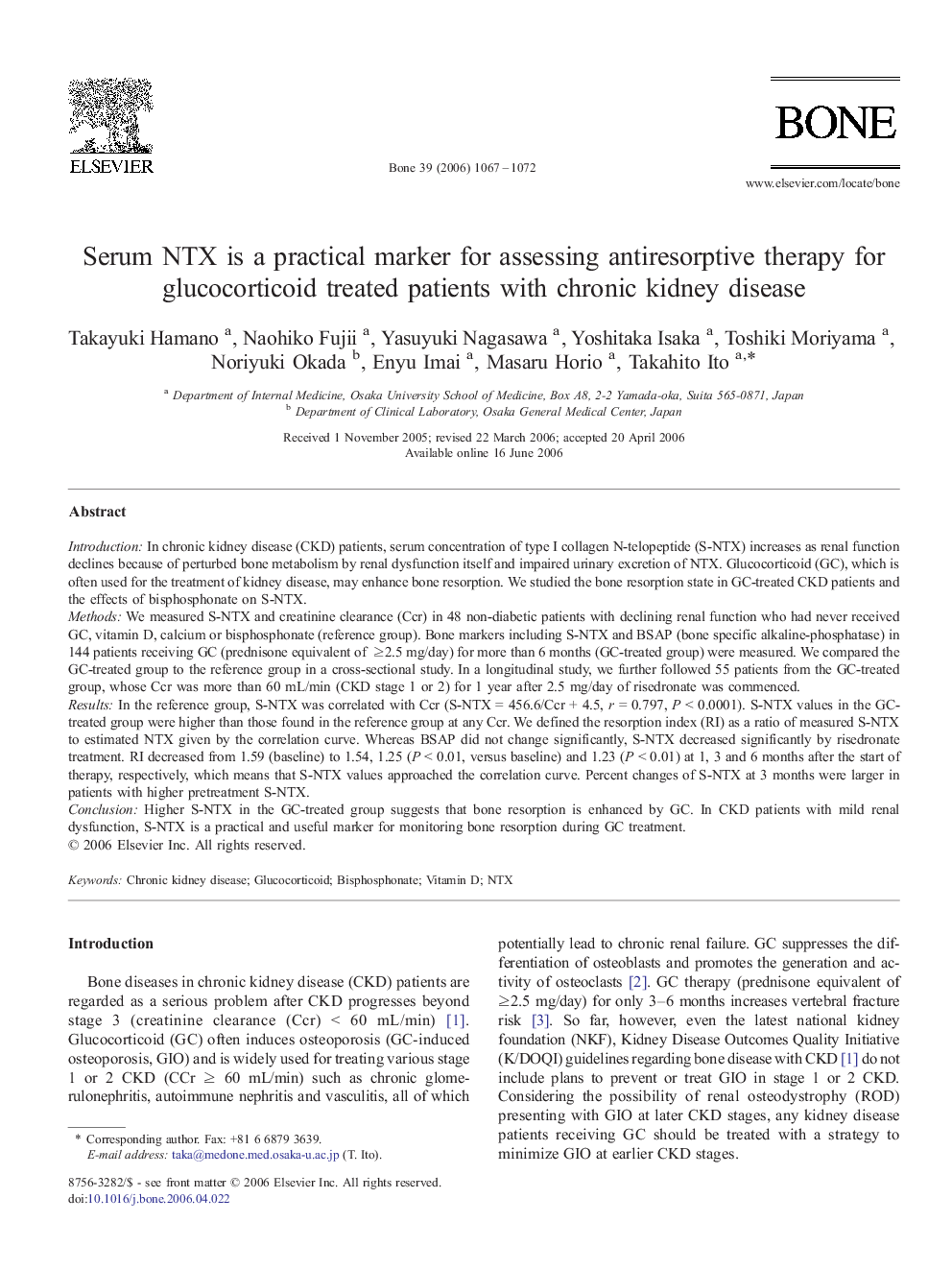| Article ID | Journal | Published Year | Pages | File Type |
|---|---|---|---|---|
| 2782297 | Bone | 2006 | 6 Pages |
Introduction:In chronic kidney disease (CKD) patients, serum concentration of type I collagen N-telopeptide (S-NTX) increases as renal function declines because of perturbed bone metabolism by renal dysfunction itself and impaired urinary excretion of NTX. Glucocorticoid (GC), which is often used for the treatment of kidney disease, may enhance bone resorption. We studied the bone resorption state in GC-treated CKD patients and the effects of bisphosphonate on S-NTX.Methods:We measured S-NTX and creatinine clearance (Ccr) in 48 non-diabetic patients with declining renal function who had never received GC, vitamin D, calcium or bisphosphonate (reference group). Bone markers including S-NTX and BSAP (bone specific alkaline-phosphatase) in 144 patients receiving GC (prednisone equivalent of ≥2.5 mg/day) for more than 6 months (GC-treated group) were measured. We compared the GC-treated group to the reference group in a cross-sectional study. In a longitudinal study, we further followed 55 patients from the GC-treated group, whose Ccr was more than 60 mL/min (CKD stage 1 or 2) for 1 year after 2.5 mg/day of risedronate was commenced.Results:In the reference group, S-NTX was correlated with Ccr (S-NTX = 456.6/Ccr + 4.5, r = 0.797, P < 0.0001). S-NTX values in the GC-treated group were higher than those found in the reference group at any Ccr. We defined the resorption index (RI) as a ratio of measured S-NTX to estimated NTX given by the correlation curve. Whereas BSAP did not change significantly, S-NTX decreased significantly by risedronate treatment. RI decreased from 1.59 (baseline) to 1.54, 1.25 (P < 0.01, versus baseline) and 1.23 (P < 0.01) at 1, 3 and 6 months after the start of therapy, respectively, which means that S-NTX values approached the correlation curve. Percent changes of S-NTX at 3 months were larger in patients with higher pretreatment S-NTX.Conclusion:Higher S-NTX in the GC-treated group suggests that bone resorption is enhanced by GC. In CKD patients with mild renal dysfunction, S-NTX is a practical and useful marker for monitoring bone resorption during GC treatment.
